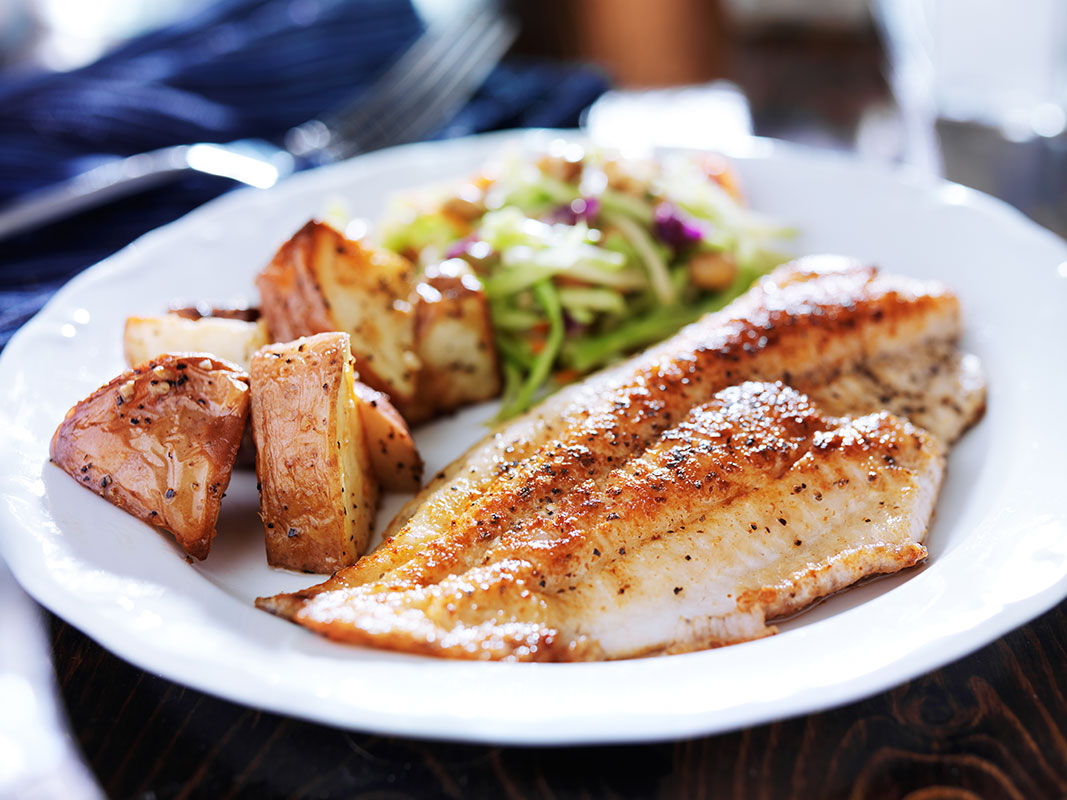Famed as the food of Pharaohs in ancient times, Tilapia is the world’s second most farmed fish, after Carp. The term Tilapia actually refers to several related fish species that originated in the Middle East and Africa but are now farmed all over the world. The waters of Asia and Latin America are the biggest suppliers of the Tilapia to the world.
If you eat fish, you have probably already had Tilapia (sometimes called St. Peter’s fish) even if you didn’t know it. That’s because Tilapia—like other inexpensive fish—is often fraudulently sold in markets and restaurants as red snapper, grouper, tuna, or other expensive species. In contrast, there’s far less chance of bait-and-switch if you order Tilapia itself.
Nicknamed “aquatic chicken” this fast-growing fish is both lauded as an excellent source of protein that’s “vital for building muscle” and denounced as a food that’s “worse than bacon”. Advocates assert that Tilapia farming can help relieve pressure on the world’s diminishing wild fish populations, while opponents cite health and environmental issues. Who’s right? The answer is not so black and white.
Tilapia is a white-fleshed freshwater fish that’s mild in flavour, which makes it appealing to people who don’t like “fishy” fish. It’s relatively low in calories (130 per 3.5-ounce serving, cooked) and rich in protein (26 grams). But if you’re looking for a lot of heart-healthy omega-3 fatty acids, Tilapia is not as fertile a source as Salmon. It has very little fat—2 to 3 grams per serving, of which less than 0.2 grams is omega-3s (in contrast, both wild and farmed salmon have more than 1.5 grams of omega-3s per serving). Farmed Tilapia is particularly low in omega-3s because its diet is predominantly corn- and soymeal-based, in contrast to the omega-3-rich algae and other aquatic plants that wild Tilapia feed on.
The Environmental Working Group considers Tilapia one of the safer seafood choices in terms of mercury, especially compared to fish such as tuna, sea bass, shark, and swordfish. According to its seafood calculator, even if a pregnant or nursing woman eats three servings of tilapia a week (and no other fish), she will get less than 10 percent of her weekly mercury limit—but also less than 10 percent of her omega-3 needs.
Tilapia is popular for good reasons—it’s inexpensive and widely available, plus it “goes with everything.” And though it’s not very rich in omega-3s, it’s a great source of lean protein(a lot of bodybuilders and fitness enthusiasts substitute their chicken breast servings with Tilapia at times) and is better for you than fatty meats like burgers. It can clearly be a part of a healthy diet if you like it, though as with all fish, we recommend that you vary your intake and look for responsibly farmed (or wild-caught) sources. Get the best Tilapia in town from Licious, through our app or the website. Get the app to find numerous recipes to cook this amazing fish as per your taste.

